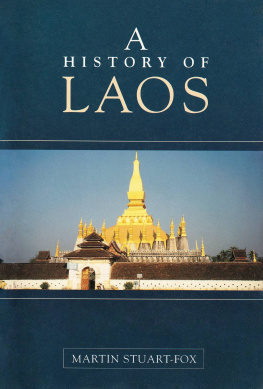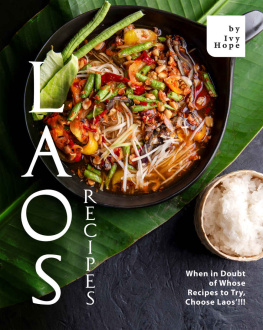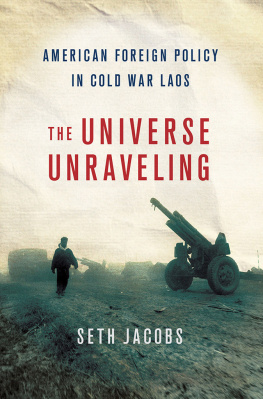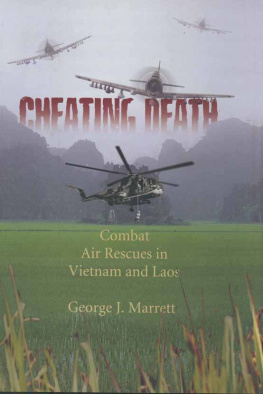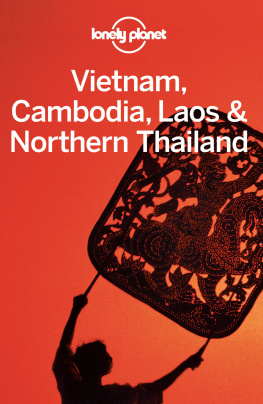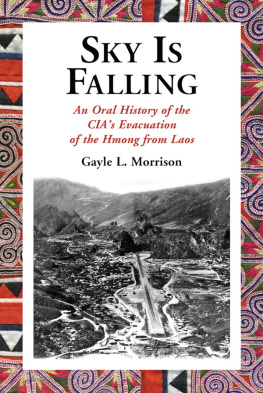A History of Laos
Martin Stuart-Fox
University of Queensland
CAMBRIDGE UNIVERSITY PRESS
PUBLISHED BY THE PRESS SYNDICATE OF THE UNIVERSITY OF CAMBRIDGE
The Pitt Building, Trumpington Street, Cambridge CB2 1RP, United Kingdom
CAMBRIDGE UNIVERSITY PRESS
The Edinburgh Building, Cambridge CB2 2RU, United Kingdom
40 West 20th Street, New York, NY 100114211, USA
10 Stamford Road, Oakleigh, Melbourne 3166, Australia
Martin Stuart-Fox 1997
First published 1997
National Library of Australia Cataloguing in Publication data
Stuart-Fox, Martin, 1939
A history of Laos
Bibliography, includes index.
1. Laos History. 2. Laos Politics and government.
I. Title.
Library of Congress Cataloguing in Publication data
Stuart-Fox, Martin, 1939
A history of Laos / Martin Stuart-Fox.
p. cm.
Includes bibliographical references and index.
Cover photograph of Tht Luang, Viang Chan, by Rod McGuinness.
For my parents-in-law
Maurice and Rose Cavalerie
former proprietors of the
Hotel Constellation, Viang Chan
Contents
Maps
Acknowledgements
Over the years of living in, visiting, and writing about Laos I have received friendship and assistance from many people. Many Lao officials have granted me formal interviews, and many more have talked to me about their country. Even now it is best that some remain anonymous. Among those I would particularly like to thank are Mayoury and Pheuiphanh Ngaosyvathn, Souneth Phothisane, Viliam Phraxayavong, Gar Yia (Gary) Lee, Somphou and Sourisane Oudomvilay, Nouansy Keohavong, Khamsing Khammanivong, Khamphuang and Khetsamouth Bouahom, and the late Claude Vincent, whose untimely death in the country he loved is deeply felt by his family and friends. Sixana Sisn and the late Phmi Vongvichit gave me of their time and expressed interest in my work. My good friend Rod Bucknell advised me on transcription.
Anyone attempting to write a general history of a country is greatly in debt to previous scholars. While the historiography of Laos remains, like the country, underdeveloped, much important research has been, and continues to be, done in France, in the United States, in Australia, and not least in Laos itself. It would be impossible to acknowledge my intellectual debt to all from whom I have learnt much in my studies of Laos. But apart from Lao friends mentioned above, I would particularly like to thank McAlister Brown, David Chandler, Jean Deuve, Arthur Dommen, Amphay Dor, Grant Evans, Bernard Gay, Geoff Gunn, Pierre-Bernard Lafont, Ng Shui Meng, Christian Taillard, Bill Vistarini, and Joe Zasloff.
Of those responsible for bringing my sprawling manuscript to the stage of publication, I owe a debt of gratitude to commissioning editor Phillipa McGuinness and my copy editor Janet Mackenzie at Cambridge University Press for their interest and support. Adnan Moussalli kindly produced the maps, while Serena Bagley prepared the final manuscript. Finally, my heartfelt thanks to my wife, Elisabeth, who may at times have wondered if this project would ever see publication, but who always gave me her love and encouragement.
Chronology
1353 | Foundation by F Ngum of the Lao kingdom of Ln Xng. |
1479 | Vietnamese invasion of Ln Xng. |
1548 | Xtththirt briefly unifies kingdoms of Ln Xng and Ln N. |
1560 | Capital moved from Luang Phrabng to Viang Chan. |
156375 | Series of Burmese invasions of Ln Xng. |
163895 | Reign of Surinyavongs. |
164142 | First Europeans to leave records arrive in Viang Chan. |
1707, 1713 | Division of Ln Xng into three kingdoms of Luang Phrabng, Viang Chan and Champsak. |
1779 | All three Lao kingdoms reduced to tributaries of Siam. |
182628 | Chau nuvongs war of independence results in destruction of Viang Chan by Siam. |
182040 | Earliest Hmong migrations into Laos. |
1861 | French explorer Henri Mouhot arrives in Luang Phrabng. |
1867 | French Mekong expedition maps river through Lao territories. |
1887 | Auguste Pavie, first French vice-consul, arrives in Luang Phrabng (February). |
1893 | French seize Lao territories east of Mekong, ceded by Siam. (Treaty signed 3 October.) |
1899 | Administrative reorganization of Laos under Rsident Suprieur. |
190107 | Holy Mans revolt in southern Laos. |
1907 | Franco-Siamese treaty establishes present frontiers of Laos. |
190810 | Leu insurrection in northern Laos. |
191416 | Leu revolt in Luang Namth, and H-Tai revolt in northeast. |
191922 | Hmong insurrection in northern Laos. |
1923 | First session of Indigenous Consultative Assembly (30 August). |
193436 | Revolt of Kommadam in the Blavn region. |
1941 | Franco-Thai war leads to loss of Lao territories on the west bank of the Mekong. |
1945 | Japanese intern French (9 March). |
King forced to declare Lao independence (8 April). |
Japanese surrender (15 August). |
Prince Phetxart proclaims unity and independence of Laos (15 September). |
Lao Issara provisional government formed (12 October). |
1946 | French reoccupy Laos (MarchApril). |
Thailand returns Lao west-bank territories (November). |
1947 | Promulgation of Lao Constitution (11 May). |
Elections for first National Assembly (August). |
1949 | Suphnuvong breaks with Lao Issara (May). |
Laos independent within French Union (19 July). |
Lao Issara government-in-exile dissolved (October). |
1950 | United States recognizes Laos as independent state (7 February). |
Patht Lao Resistance government formed (August). |
1951 | Suvanna Phm forms his first government (November). |
1953 | Vietminh invade Laos (April, December). |
1954 | French surrender at Dien Bien Phu (7 May). |
Signing of Geneva Agreements (20 July). |
1955 | Formation of Lao Peoples Party (22 March). |
1956 | Formation of Lao Patriotic Front (January). |
Second Suvanna Phm government (March). |
Negotiations with Patht Lao to form coalition government. |
1957 | Formation of First Coalition government (19 November). |
1958 | Supplementary elections (4 May) result in leftist gains. |
Formation of US-backed right-wing Committee for the Defence of the National Interest (10 June). |
Suspension of US aid forces resignation of Suvanna Phm (22 July). |
Formation of right-wing government (18 August). |
1959 | Forced integration of Patht Lao forces fails. |
Next page
